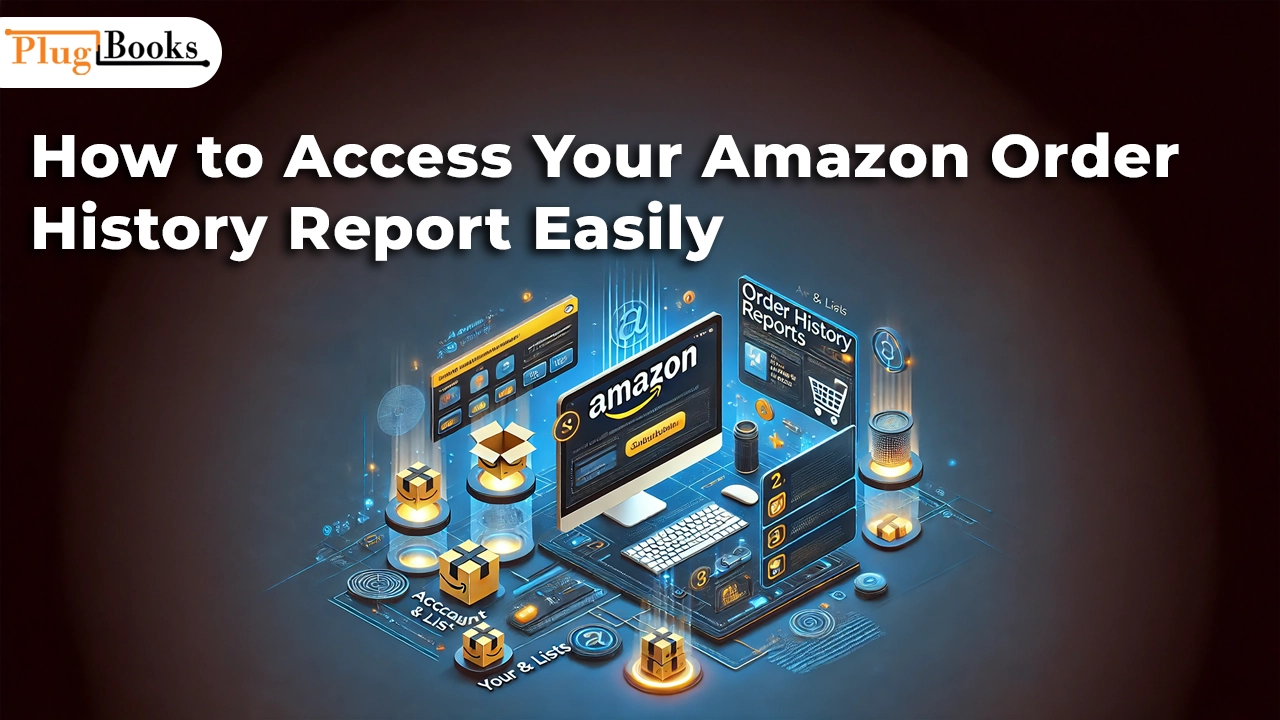For personal or commercial reasons, have you ever had to go over your Amazon order history? An Amazon order history report is a vital tool whether you’re tracking spending, submitting taxes, or handling inventories. This article will lead you through how to obtain and understand your report so you remain current with your buying activities.
We will also go over related subjects including QuickBooks Online’s financial data organization and simple chart of accounts setup. For more thorough transaction analysis, if you sell also use Amazon Seller Reports.
What is an Amazon Order History Report?
Your Amazon order history provides a thorough record of every purchase you made on the site. Key data like order dates, product details, payment methods, and shipment addresses is contained in this file. Whether you manage a small business or just do casual shopping, tracking your expenditure and financial records depends on having access to this report.
Tracking your sales, refunds, and costs is equally vital for Amazon sellers, hence Amazon Seller Reports are quite helpful. These analyses enable you to control the financial situation of your company and provide a general picture of your sales success.
How to Access Your Amazon Order History Report
Here is how to obtain your Amazon order history:
Check in to your account: Go to Amazon.com and log into your account.
Go to your orders:. Click ” Returns & Orders” from your screen’s top right corner.
Order History Report Download: On the page from the right side, locate the “Order History Reports” link. You can personalize your report here by choosing a date range or order type—such as digital purchases or refunds.
Get and review: Click “Request Report,” once you have chosen. The report will be created; for simple access, download it in CSV format.
Understanding Your Amazon Order History Report
The quantity of information in the report you get will enable you to better handle your money. Usually, you will notice these main columns:
- Order ID: Individual code assigned to every order.
- Product Name: Lists bought goods.
- Purchase day: The day the order was put in.
- Quantities: How many of every item you bought?
- Total price: Including taxes and delivery costs, the goods’ total price is.
Examining this report can help you to monitor your own spending, control your company’s costs, and perhaps spot any regular charges requiring more investigation.

How to Use Your Amazon Order History Report for Financial Tracking
Including your Amazon order history into your financial system will help you to maximize it. Small business owners need a well-organized chart of accounts if they are to classify their transactions. Here Amazon’s statistics can be especially helpful.
Simple Business Chart of Accounts Layout
You’ll want to create a simple chart of accounts to begin going. This covers classifying expenses like digital services, delivery costs, or Amazon purchases. Knowing how to create a chart of accounts including categories for Amazon-related transactions is crucial if you use Quickbooks online.
You might need to know what chart of account security falls under or how to handle other business-related categories if you’re not sure where to put some transactions. Sometimes effectively arranging your funds requires a Mattox style for the chart of accounts.
Correcting Your QuickBooks Online Chart of Accounts
QuickBooks Online makes it simple if you have to change your chart of accounts. This is how:
- Register in QuickBooks: Enter into your QuickBooks account.
- Go to Settings: Choose “Chart of Accounts.”
- Edit or Add Accounts: Edit or update an existing account or create a new one especially for Amazon-related costs. Clearly label it so that it may be tracked easily.
Correcting your Amazon costs can help you to create accurate financial records and better monitor your expenditure.
Amazon Seller Reports: How They Differ and How to Use Them
If you sell Amazon products, you must monitor your company sales and costs in addition to your personal purchases. Amazon Seller Reports include detailed information about your purchases, thereby clarifying your sales patterns, inventory control, and payment records.
From your Seller Central account, you may see Amazon Seller Reports. These reports let you go over comprehensive material including:
Sales Summary: All of your sales over a certain period.
Refunds and Adjustments: Track any consumer returns and changes to your account in refunds and adjustments.
Fees and Expenses: Understanding Amazon’s seller fees, shipping charges, and other business-related expenses helps one better handle their own.
Regular downloads of these reports help you to guarantee accurate and current financial records.

Simplify Your Amazon Accounting with PlugBooks
Using PlugBooks.io made handling your Amazon orders and financial data much simpler. This great application saves you time by automatically matching your Amazon orders, fees, and costs with your accounting system, therefore guaranteeing correct records.
Whether you run a full-fledged company or are a casual vendor, PlugBooks simplifies your bookkeeping so you could concentrate on expansion rather on documentation. Get going right now by visiting PlugBooks.io.
Additional Tips for Managing Your Amazon Orders
- Set Up Filters: Filtering your order history by date or item category will help you discover certain records if you make several purchases.
- Look for mistakes: For any disparities—such as erroneous pricing or missing items—always double-check the report.
- Organize Your Records: Especially during tax season, download your reports often and maintain their organization.
Conclusion:
Whether for corporate accounting or personal budgets, your Amazon order history reports are a great tool for controlling purchases. Understanding and arranging this information can help you to take greater control over your money. For vendors trying to monitor sales and costs, Amazon Seller Reports also offer more in-depth information.
See PlugBooks.io for a flawless approach to handle Amazon data and include it into your accounting. It guarantees correctness and saves time by streamlining connecting your Amazon orders with your financial information.




